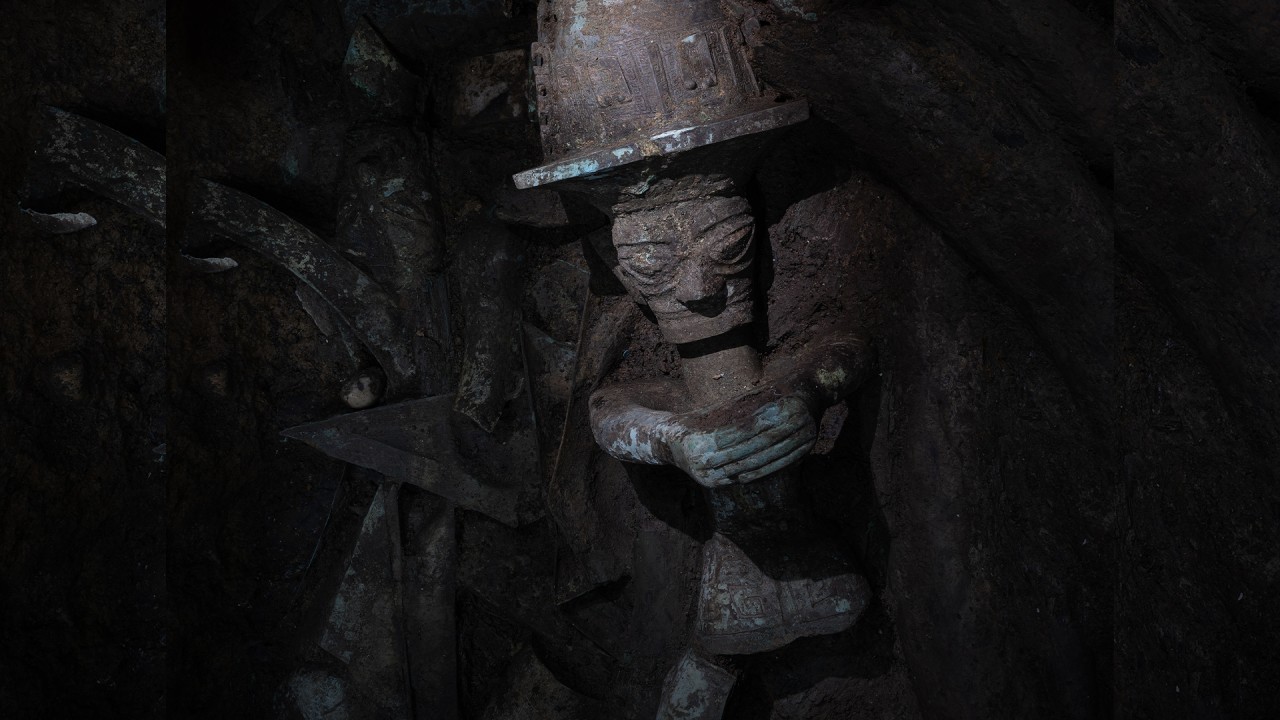
The colour of evolution in northern China: are small Old Stone Age tools and ochre proof of first human colonisation?
- Ochre use and small tools reveal ‘novel technology’, and suggest cultural adaptations indicative of first colonisation by modern humans, says team behind dig
- ‘Current evolutionary scenarios are simplistic’, asserts paper published in the Nature journal
The find indicates innovative behaviours with the mineral pigment, although its purpose remains unclear, according to an international team behind the dig, which also unearthed a collection of about 400 stone tools.
Most of the 382 stone artefacts found in the riverside dig in the well-preserved riverside site of Xiamabei – in Hebei province – were shorter than 4cm (1.6in).
Some of them featured handles, or hafts, representing a “novel technology for northern China”, said the team, which included scientists from the Hebei Provincial Institute of Cultural Relics and Archaeology, the Chinese Academy of Sciences, and their peers from institutes in Australia, Austria, France, Germany, Norway, Spain and the United States.

The site of the dig, on the south bank of the Huliu River in the Nihewan Basin, is regarded as one of the most important paleolithic – or Old Stone Age – sites in East Asia.
“The record emerging from northern China challenges dominant paradigms by showing that, during a critical time window around 40,000 years ago, a variety of cultural adaptations existed,” the team said, pointing to previously unrecorded hafting techniques and the presence of innovations like ochre use and a bone tool used as a scraper on soft material.
“Current evolutionary scenarios are simplistic,” the researchers assert in their just-published paper. “We should expect repeated but differential episodes of genetic and cultural exchange over large geographic areas.”
The authors said the cultural traits at Xiamabei were unique for eastern Asia and did not correspond with those found at other archaeological sites inhabited by archaic populations, such as the Neanderthals and Denisovans, or to those generally associated with the expansion of homo sapiens.
One of the most profound events in human evolution was the worldwide expansion of homo sapiens, who dispersed out of Africa multiple times over the past 200,000 years or so, interbreeding with ancient humans such as the Neanderthals and Denisovans as they migrated across Eurasia, according to the study.
Corresponding author Yang Shixia, associate researcher at the Chinese Academy of Sciences’ Institute of Vertebrate Paleontology and Paleoanthropology, said the new findings showed evidence of an affluent lifestyle that largely depended on hunting.
“Imagine a group of people or a family gathering around a fireplace at the site where they took a break between hunts. Some were processing hides, slaughtering animals and cutting plants using tools with handles, while others staying further away from the fire were grinding ochre they collected and creating a large quantity of fine red powder.
“Ochre has long been seen as an indicator of human behaviour complexity, and creating tools with handles is also a sign of highly developed behaviour,” she said.

According to the study, the bulk of the mammalian fossils unearthed at the site were shorter than 2cm (0.8in), with most burnt and some “highly carbonised”, suggesting that they were possibly used as fuel.
The researchers said the presence of pollen and animals including horse, deer and zokor showed people lived in a steppe landscape with patches of coniferous forest, mostly pines, and the area was cool and semi-arid at the time.
Wear patterns on the hafted pieces showed that they were used for “purposes including hide scraping, boring and scraping against hard matter (probably wood), whittling soft plant material, and probably cutting soft animal matter,” according to the study.
Different types of ochre were brought to the site and processed using abrasion and pounding to produce powder of different colours and fineness.
The eight coolest archaeology and palaeontology discoveries in China in 2021
“The quantity of ochre powder produced was large enough for the leftover material to permanently impregnate the sediment of the area on which tasks took place,” the paper said.
“This work area, which represents the earliest known instance of ochre processing in Eastern Asia, indicates that the use of this material was part of the behavioural repertoire of regional populations by about 40,000 years ago, preceding the origin of microblade technologies in China by 10,000 years,” it said.
But the purpose of using ochre has yet to be established, with possibilities including producing paint to colour objects or decorate bodies, tanning hides or using it as a loading agent for adhesives, according to the study.
“Ochre production at Xiamabei represents the earliest known example of this practice in eastern Asia,” Yang said.
“But we were not able to identify the usage of the red powder. Figuring out what they used it for would be our next step in the studies at the site.”


